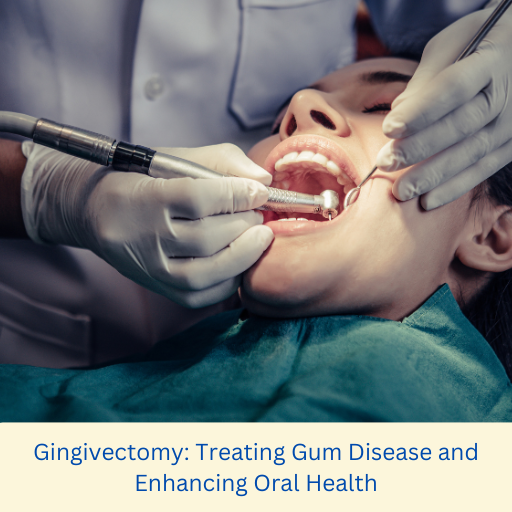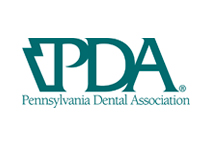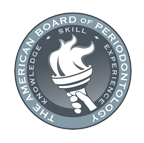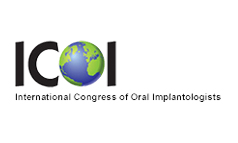
Discover how gingivectomy can effectively treat gum disease and improve your oral health. Learn about the procedure, benefits, and prevention tips for optimal oral hygiene.
Gum disease, also known as periodontal disease, is a common oral health issue that affects many individuals. It can lead to various complications if left untreated, including tooth loss and systemic health problems. Fortunately, there is a solution that can help combat gum disease and improve oral health: gingivectomy. In this article, we will explore the effectiveness of gingivectomy as a treatment for gum disease, its benefits, and essential tips for maintaining optimal oral hygiene.
Summary
1. Understanding Gum Disease and Its Impact
2. What Is a Gingivectomy and How Does It Work?
3. The Benefits of Gingivectomy for Gum Disease Treatment
4. The Procedure: What to Expect During a Gingivectomy
5. Recovery and Aftercare Tips Following Gingivectomy
6. Prevention Is Key: Maintaining Good Oral Hygiene
7. The Role of Diet in Gum Disease Prevention
8. Oral Health Products to Support Gum Disease Prevention
9. Lifestyle Habits That Promote Healthy Gums
10. The Importance of Regular Dental Check-ups
1. Understanding Gum Disease and Its Impact
Gum disease is a prevalent oral condition that affects the gums and surrounding tissues. It is primarily caused by plaque buildup, which harbors harmful bacteria. If not addressed promptly, gum disease can progress from gingivitis, characterized by inflamed gums, to periodontitis, where the infection reaches the deeper structures supporting the teeth. The impact of gum disease extends beyond oral health, potentially contributing to cardiovascular diseases and diabetes.
Gum disease, scientifically known as periodontal disease, is a widespread oral condition that profoundly affects the health of the gums and the tissues surrounding the teeth. This condition arises primarily due to the accumulation of plaque, a sticky film of bacteria, on the teeth and along the gumline. Without timely intervention, gum disease can evolve from its initial stage of gingivitis, marked by red and inflamed gums, into the more advanced and serious stage of periodontitis, where the infection reaches deep into the structures that support the teeth.
2. What Is a Gingivectomy and How Does It Work?
A gingivectomy is a surgical procedure that aims to remove or reshape diseased gum tissue. It is performed by a skilled periodontist or oral surgeon under local anesthesia. The procedure involves carefully excising the infected gum tissue, eliminating pockets where bacteria thrive. By removing the diseased tissue, the gums can heal properly and reattach to the teeth, promoting a healthier oral environment. A gingivectomy, a surgical procedure tailored to address gum disease and restore optimal oral health, stands as a testament to modern dentistry’s commitment to providing effective solutions. This meticulous procedure, typically performed by a skilled periodontist or oral surgeon, involves the strategic removal or reshaping of diseased gum tissue. Let’s delve into the details of this procedure, its execution, and the transformative impact it can have on gum health.
3. The Benefits of Gingivectomy for Gum Disease Treatment
Gingivectomy offers several benefits in treating gum disease.
- Eliminating infection: By removing the diseased tissue, gingivectomy eliminates the source of infection, reducing inflammation and preventing further damage.
- Improved aesthetics: Reshaping the gumline through gingivectomy can enhance the appearance of the smile, particularly in cases where excessive gum tissue is present.
- Reduced pocket depth: Gingivectomy reduces the depth of gum pockets, making it easier to clean and maintain good oral hygiene.
- Long-term oral health: By addressing gum disease promptly, gingivectomy can prevent tooth loss and improve overall oral health.
- Healthier Smile: Gingivectomy’s aesthetic enhancement component translates to a brighter smile that radiates confidence.
- Enhanced Comfort: The elimination of infection sources translates to reduced discomfort, contributing to an improved quality of life.
- Preventive Power: By intercepting gum disease’s advancement, gingivectomy serves as a preventive measure against further complications.
- Oral Hygiene Facilitator: The reduced pocket depth facilitates efficient oral hygiene practices, fostering lasting gum health.
4. The Procedure: What to Expect During a Gingivectomy
Before undergoing a gingivectomy, the dentist will evaluate your oral health and create a personalized treatment plan. During the procedure:
- Anesthesia: Local anesthesia is administered to ensure a painless experience.
- Incisions: The dentist carefully makes incisions to access the infected gum tissue.
- Tissue removal: Diseased gum tissue is skillfully removed using specialized tools.
- Tissue reshaping: In some cases, the dentist may reshape the remaining gum tissue for aesthetic purposes.
- Sutures: The incisions are closed with dissolvable sutures to facilitate proper healing.
- Incisions:
- With the anesthesia taking effect, the dentist meticulously creates incisions in the gum tissue. These incisions provide access to the areas where infected gum tissue resides.
- Tissue Removal:
- Using specialized instruments, the dentist deftly removes the diseased gum tissue. This step demands precision and skill, as the goal is not only to eliminate the infection source but also to maintain the integrity of the surrounding healthy tissue.
- Tissue Reshaping (Optional):
- In cases where aesthetic considerations are pertinent, the dentist may decide to reshape the remaining gum tissue. This can enhance the overall appearance of your smile and contribute to the harmonious balance of your gumline.
- Sutures:
- Upon completing the tissue removal and any reshaping, dissolvable sutures are employed to close the incisions. These sutures play a crucial role in facilitating proper healing and ensuring a seamless integration of the treated areas.
5. Recovery and Aftercare Tips Following Gingivectomy
After a gingivectomy, proper care is crucial to ensure a smooth recovery and long-lasting results. Follow these aftercare tips:
- Oral hygiene: Maintain regular brushing and flossing, avoiding the treated area initially.
- Soft diet: Stick to soft, non-irritating foods for the first few days to allow the gums to heal.
- Avoid tobacco and alcohol: Smoking and alcohol consumption can impede the healing process.
- Gentle rinsing: Use a saltwater rinse or an antiseptic mouthwash as advised by your dentist.
- Follow-up appointments: Attend scheduled follow-up appointments to monitor the healing progress.
6. Prevention Is Key: Maintaining Good Oral Hygiene
Gum disease prevention is critical for maintaining good dental health. By implementing a consistent oral hygiene routine, you can significantly reduce the risk of gum disease. Here are some important strategies for keeping your gums healthy
- Brushing technique: Use a soft-bristle toothbrush and brush gently in circular motions twice daily.
- Flossing: Clean between your teeth daily to remove plaque and food particles.
- Mouthwash: Use an antiseptic mouthwash to reduce bacteria and freshen your breath.
- Regular dental check-ups: Visit your dentist at least twice a year for professional cleanings and thorough examinations.
- Healthy lifestyle: Adopt a balanced diet, avoid smoking, and manage stress to support overall oral health.
7. The Role of Diet in Gum Disease Prevention
A well-balanced diet plays a significant role in gum disease prevention. Incorporate the following key nutrients into your diet
- Vitamin C: Found in citrus fruits and leafy greens, it strengthens the gums and supports healing.
- Vitamin D: Consume fatty fish, egg yolks, and fortified dairy products to promote gum health.
- Calcium: Dairy products, almonds, and leafy greens provide calcium for strong teeth and gums.
- Omega-3 fatty acids: Cold-water fish, flaxseeds, and walnuts are excellent sources for reducing inflammation.
8. Oral Health Products to Support Gum Disease Prevention
Using the right oral health products can complement your oral hygiene routine and support gum disease prevention. Look for the following:
- Soft-bristle toothbrush: Gentle on gums and effective in removing plaque.
- Antimicrobial toothpaste: Reduces bacteria and controls gum inflammation.
- Interdental cleaners: Dental floss, interdental brushes, or water flossers to clean between teeth.
- Antibacterial mouthwash: Helps kill bacteria and freshens breath.
- Tongue scraper: Removes bacteria from the tongue surface.
9. Lifestyle Habits That Promote Healthy Gums
Certain lifestyle habits can contribute to healthy gums and overall oral health. Consider the following:
- Stress management: High-stress levels can weaken the immune system, making gums more susceptible to disease.
- Quit smoking: Smoking compromises gum health and increases the risk of gum disease.
- Limit sugary snacks: Excessive sugar consumption promotes plaque formation, leading to gum inflammation.
- Stay hydrated: Drinking water helps flush out bacteria and maintain saliva production.
10. The Importance of Regular Dental Check-ups
Regular dental visits are essential for maintaining good oral health. Here’s why they are essential:
- Professional cleanings: Dentists remove stubborn plaque and tartar buildup, reducing the risk of gum disease.
- Early detection: Regular check-ups enable dentists to identify early signs of gum disease and provide timely treatment.
- Oral cancer screening: Dentists can detect signs of oral cancer during routine check-ups, improving chances of successful treatment.
- Personalized advice: Dentists offer tailored recommendations for oral hygiene and gum disease prevention.
Conclusion
Gum disease is a prevalent condition that can have serious consequences if left untreated. With the help of gingivectomy, we can effectively combat gum disease and improve oral health. By understanding the procedure, its benefits, and the importance of preventive measures, individuals can take charge of their oral hygiene and maintain healthy gums. Remember, regular dental check-ups and a consistent oral care routine are key to a lifetime of healthy smiles. Prioritize your oral health, and don’t hesitate to consult with your dentist about gingivectomy and other treatment options. By taking proactive steps, you can achieve a healthy and vibrant smile for years to come.









